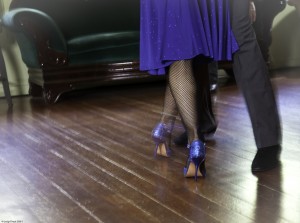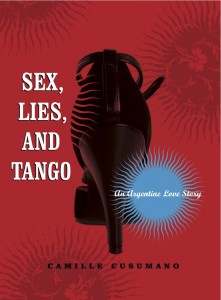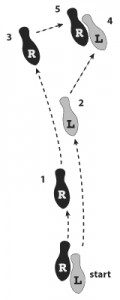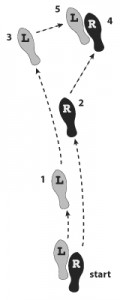Why Tango is Like the Kama Sutra
People (who don’t tango) constantly ask me why I believe tango is like no other dance. Here I simply offer more food for thought:
The eight-count basic can be  viewed as the Kama Sutra of Argentine tango. I have called this eight-step pattern the Mother of all tango steps, moves, or patterns because it is the matrix from which all tango is born. From its maternal, or Great Mother, instincts emanate all the offspring positions between two partners in tango.
viewed as the Kama Sutra of Argentine tango. I have called this eight-step pattern the Mother of all tango steps, moves, or patterns because it is the matrix from which all tango is born. From its maternal, or Great Mother, instincts emanate all the offspring positions between two partners in tango.
I am referring to dance positions. The Kama Sutra, an ancient Hindu manual written in Sanskrit, refers in part to human sex positions. But the Kama Sutra is as much a guide to pleasure, as to virtuous living, loving, playing, working—all in balance to the world around us.
Let’s consider the Eight-Count Basic:
Position 1. Woman pursues man. In every ballroom dance, the man advances his left foot forward and the woman her right foot back. Au contraire in tango. Feminine energy ignites this pattern as woman steps forward on her left, man back on his right.
Postion 2. Man receives woman’s advances and responds by scooping her off to his left side in equal footing (often slyly overstepping her). Perhaps he is only tentatively mirroring her come hither call. Now we see the unique “call-and-response” phrases of tango music begin.
Position 3. Man takes his lead and advances toward woman who steps back with anticipation that she hides (woman goes into her fight and flight mode). Torsos subtly turn on the diagonal.
Postion 4. Man steps forward as woman steps back again, both panther-like. They both know what’s coming next (but it doesn’t always work).
Position 5. The Climax: Part A. Man does a sort of “bluff charge,” as he thrusts woman with gentle impetus while he collects his ground, two feet together. Part B. Simultaneously, while he pauses, she, having been coaxed by that spiraling of bodies is brought to the pattern’s Climax, or the sine qua non of Argentine tango, the Cruzada (cross). Her hips swivel from the slight diagonal to squaring off with the man as her left foot closes in front of her right. They breathe. And the dance breathes as one when this position is in perfect sync.
Position 6. The Resolution or Denouement begins: Man leads woman back. He can cool his (and her) heels by continuing to walk forward, she back. OR:
Position 7. Man & Woman step to the left.
Position 8. Man & Woman step to closed feet, or collection.
Other comments:
• Position 6, 7, & 8 are often sing-songly described as TAN-GO-CLOSE.
• Compressed into each one of these eight steps is almost an infinite number of sub-steps and patterns, or figures that can be led in this dance of improvisation. Not reflected in the descriptions (or diagrams below) is the infinite amount of “data transfer” between the partners palms, arms, torsos—in other words, the embrace and connection. As in sexual play, much of this dialogue is pre-verbal communication.
• You might hear tango teachers describe the beat of steps as quick-quick-slow, or variations therein, which helps students measure the speed of weight changes. But you almost never hear tango taught to the beat of counting. The eight-count basic numbers refer to foot placement, similar to the five feet positions in ballet—except that in tango the positions are in relation to lead and follow.
The diagrams below, show only the footwork, none of the interplay of the torsos and the embrace and connection.
• In conclusion, we might sense why many tangueros talk of tango’s spiritual dimension. There was no need to call the Kama Sutra a “spiritual” guide all those years ago because the spirit and body were one and the same in the Indian’s Vedic tradition. At some point in the past two thousand years or so we began to isolate the body and spirit (or soul or mind, if you like) and to attribute sin to bodily pleasures. It should be noted that the Kama Sutra acknowledges that the senses can be dangerous, “Just as a horse in full gallop, blinded by the energy of his own speed, pays no attention to any post or hole or ditch on the path, so two lovers, blinded by passion, in the friction of sexual battle, are caught up in their fierce energy and pay no attention to danger.”
For many, tango continues to be wholesome, pleasurable recreation. And for many it is also this rarefied joy of feeling at once in the body and in that which we call spirit. As I am among the latter, I can’t help but draw this parallel between the inviolate wisdom of the ancient book and this dance with younger roots – but more than 100 years old. The wisdom in both is about refining our lives. From the play of peaceful conflict between the masculine and feminine comes life itself, and everything we experience between birth and death.
Think about it next time you move with your partner to the call-and-response of tango.

